The two of us are sitting in the back of a beaten up old Toyota saloon as we bounce along, down a seemingly endless dirt track on the east coast of Canada. Call me blinkered, but I can’t help thinking a bit about duelling banjos and certain films where the locals go a bit loopy. It’s the kind of track that seems to be going nowhere particularly fast, and our guide the strong silent type who, to be perfectly honest, is not finding Pete and I funny—at all. Either we really are distinctly not amusing, or he has had enough of the two of us sitting in the back, sniggering like a couple of smutty kids on the way to their first prom. We’re grown men (or at least meant to be), but we can’t stop giggling because our young guide, Drapper Clarke, has just guaranteed us that we are going to stop sometime soon and see a great big shoal of Atlantic salmon stacked up in a crystal clear water. Come on, this is Atlantic salmon fishing. Salmon stacked up in a pool, and you can actually see them?
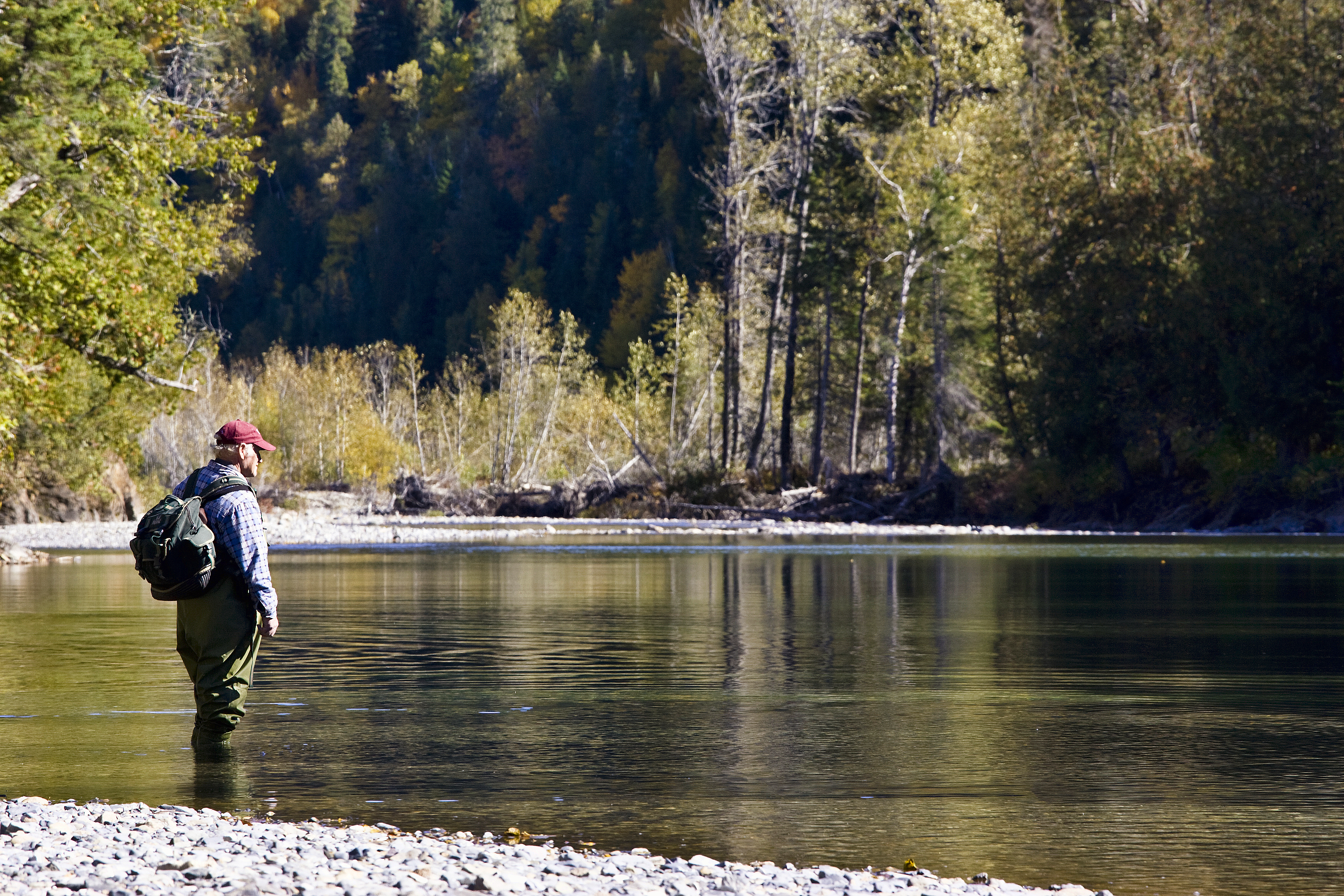
Surely we should be having the talk from a slightly dour Scottish ghillie, smoking a pipe, tying a fly by touch alone and itching his beard all at the same time— as it’s raining cats and dogs because it’s Scotland— and not some young local who has to be seriously mistaken. Come on, I’m a fishing journo; I’ve heard plenty of tall stories in my time. Tell me something serious, like, “How to look like a bit of an idiot in front of your guide: part one.” Look me up if you need some lessons.
We eventually come to a standstill next to a bunch of trees, and Pete McLeod and I stumble out of the back of the Toyota. We can hear the river gurgling somewhere below us, but can’t see it. On go the chest waders as quick as you like, but before we put the rods together I suppose we had better take a quick look at this bit of water. Let’s at least humour our guide. Maybe the tobacco out here is different to the stuff in good old England.
At first glimpse the water sure looks suspiciously clear, and I mean really clear. It’s the kind of clear when the water looks almost as if it’s not there. Counting pebbles clear. A few steps further down the path and I have to do a double take. A deeply intelligent look comes across my face. (You know the one—open, hangdog mouth and wide, bulging eyes, the product of too much fishing and not enough time in the classroom.) Pete and I have just laid our eyes upon a great big shoal of salmon sitting quite peacefully with their noses into the flow. That’s right, plain as day, the fish are there. Sheepishly I turn back towards the car to set up my rod, mumbling some kind of apology to our guide.
“How to look like a tit in front of your guide: part two.” Put the rods together, charge down to the river’s edge like a couple of kids on their way to meet girls for the first time (there’s a pattern emerging here), thrash the water for an hour and catch nothing. Come on, we can see the fish, surely they have to be a cinch to catch. Turn to Pete, shrug my shoulders, and admit that we have both been a couple of prize turkeys. We ask the inevitable, “What would you recommend?” to our knowing guide, and take the unspoken humbling right on the chin like the grown men we are. Right about now we are going to start doing this thing properly.
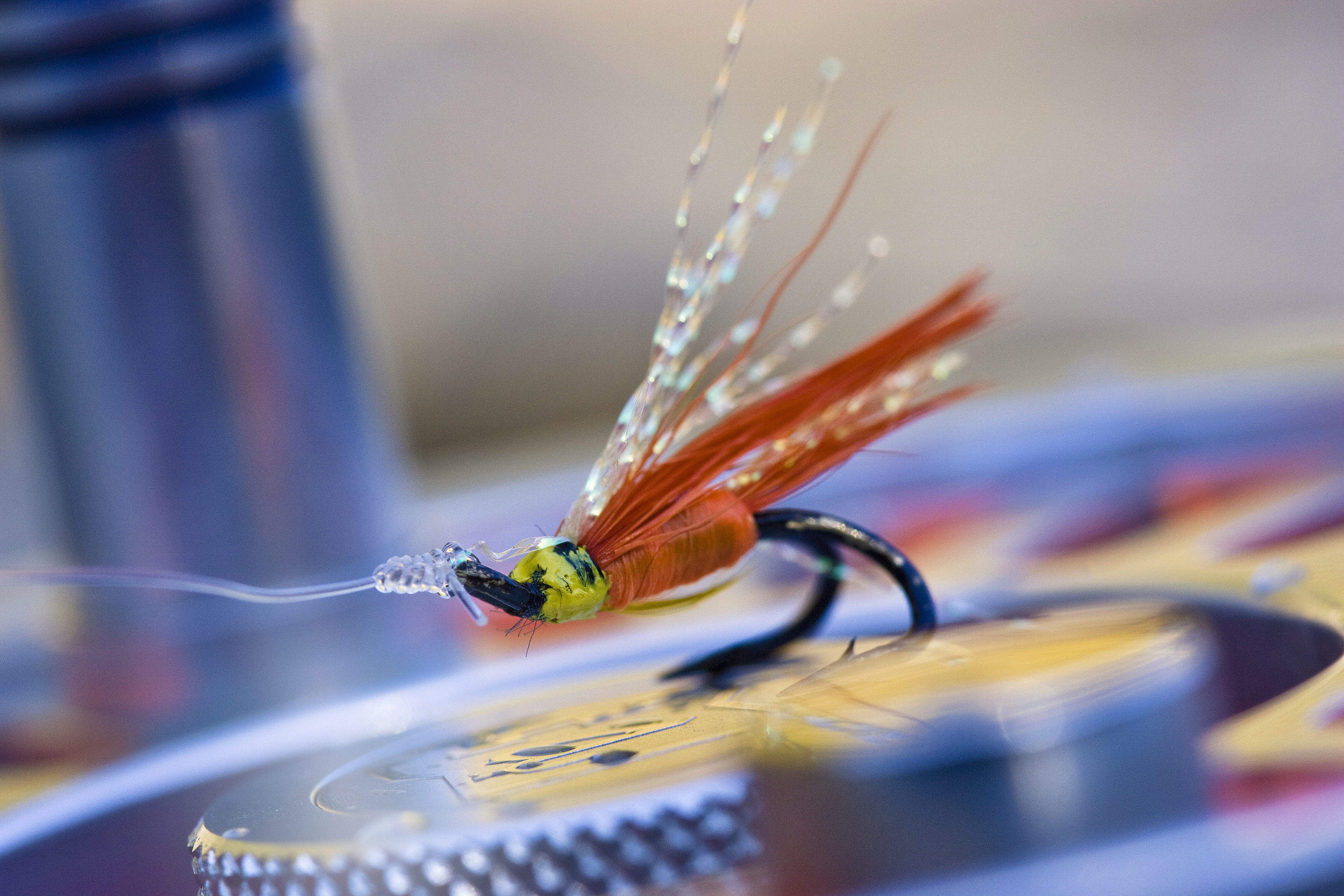
Perhaps if I stated my position here you might better understand me. If you tied me down and demanded that I classify myself as an angler, then my heart lies with the ocean. Work has increasingly brought me into contact with rivers and lakes all around the world, but until this trip I had never been Atlantic salmon fishing, or photographing.
There is some pretty good small river salmon fishing around where I live in the south west of the UK, and up north we have Scotland and all this magical country inspires within fly fishermen—on the salmon front especially. But me? I’ve never even seen an Atlantic salmon in the flesh, but wanted to, badly. Never could I have imagined that in select few places on this wonderful planet is it possible see these majestic fish in rivers so clear you can’t help but do a double-take.
The Gaspé Peninsula on the east coast of Canada has to be one of the world’s great fishing secrets. When it comes to salmon fishing, there are some mightily remote and expensive parts of the world to visit, including the famed Kola peninsula in Russia, and of course the Alta river in Norway. For reasons I will never understand, some places seem to fall under the radar and remain the domains of well-informed anglers who have heard about them on the world grapevine. These kinds of places are often remarkably unspoilt and under-publicised. Salmon are special on their own, but now put gin-clear rivers into the melting-pot, and in my mind it has now become something even more special and different.
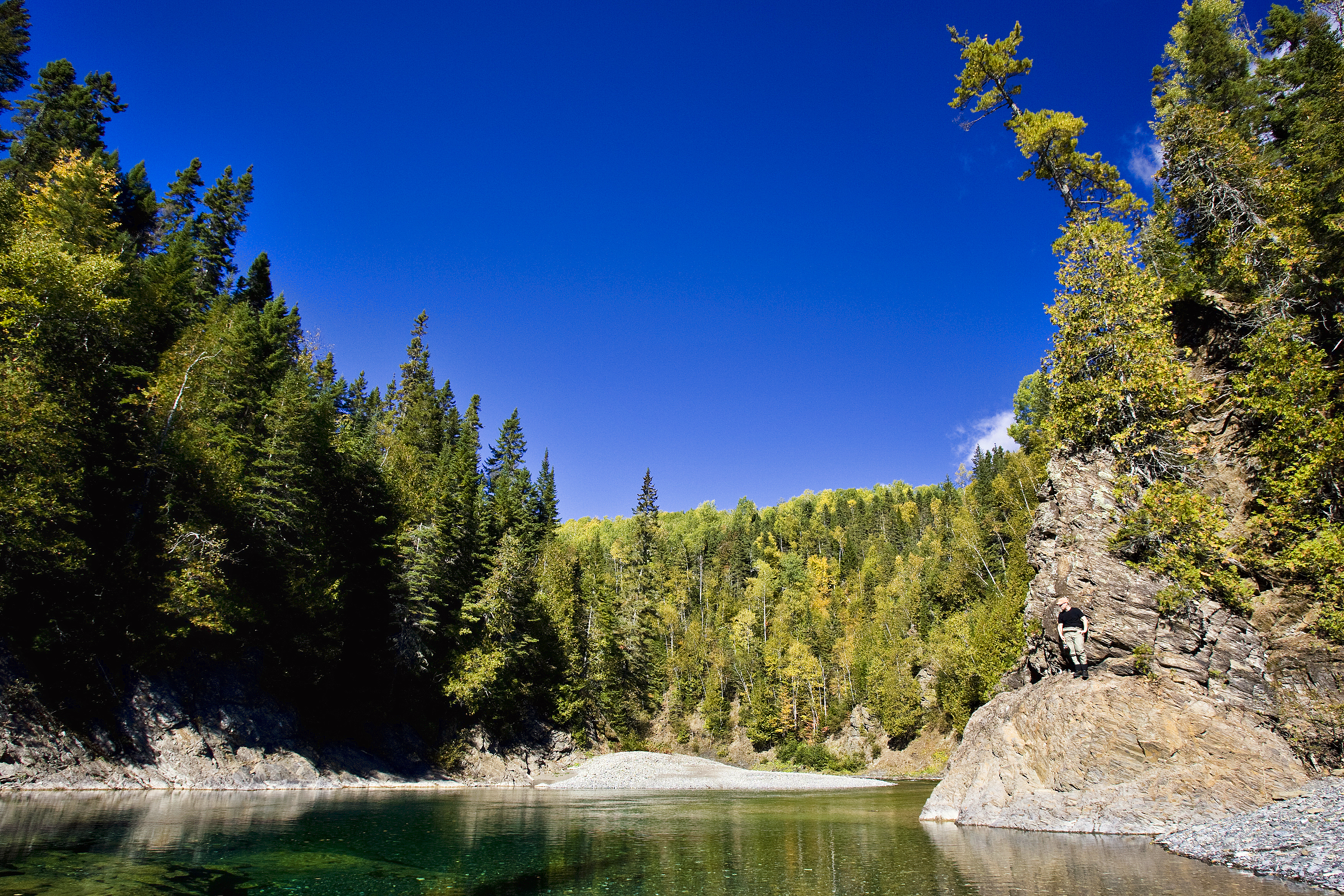
The Gaspé Peninsula has several of these spring fed rivers where you can sight fish to Atlantic salmon, but make no mistake, this is by no means a numbers game. Atlantic salmon fishing rarely is, except for when the Russian rivers really fire. But what sight fishing affords is a rare glimpse at these magnificent fish as they react to you fishing for them. In rivers as clear as the glass of gin you partake of that evening (for medicinal purposes, I am sure), you can fish for, and watch as the salmon often refuse to move to a well-presented fly again and again. Something will happen if you keep on at it, as your guide recommends. (I’m still eating humble pie). Try to control yourself as 30lbs of salmon suddenly wakes up, checks your fly, and literally charges across the pool to nail it. You’re a better angler than me if you manage to avoid striking far too early the first time it happens.
By nature I am a somewhat hectic fisherman, but the very rhythms of salmon fishing are so delightfully calming and restorative, especially after you have done your very best to look like a fool for a few hours. New place, new excitements. Not only does it give me a kick to be sight fishing to the king of fish, it also affords me a great chance to learn more about my quarry. As an Atlantic salmon fishing virgin, I need a crash course in what goes on underneath the water when my fly swings past, and these Gaspe rivers seem to have been custom designed just for this purpose. Not only do you get to fish for fish that you can see, you are getting one of the best salmon behaviour lessons you could ever hope to find. The fact that you can see these salmon in the rivers does not make them any easier to catch, as I am sure you can imagine. But, wow, what a huge thrill to watch fish so closely in their natural environment.
July and August is the favoured time to target the salmon with dry flies. My heart races at the thought of seeing 30lbs of fish rise to a dry on these quiet rivers. Outside these times, the bulk of the fishing is mainly wet fly fishing, upstream, downstream and across, stripping and swinging the fly. Spey casting works on a couple of the rivers in early season, but these smaller waters can mostly be tackled with a very simple single-handed outfit. Fly fishing is strictly catch and release. This visit was right at the end of the season, and we left just after it closed. As you might expect, we saw all kinds of weather. From fishing in shirt sleeves, then fleeces, wading jackets and hot flasks of soup by the side of the river, we saw salmon in every single pool our guides took us to. But they are all in touch with each other, know where the fish are, roughly how large the shoals are, and as fish move there are people out on the river checking up on things. I could get used to this on the final day and I am now pretty confident that our young guide Drapper has got the measure of us. We’re serious about what we do, but what’s the point of going fishing if you can’t have a giggle now and then? I am more than happy to do what it takes to experience different things within fishing, and when we are offered the chance to go on a big hike downstream we snapped it up like a GT might hit a Flashy Profile. No hesitation, no doubt—let’s go for it and see what happens.
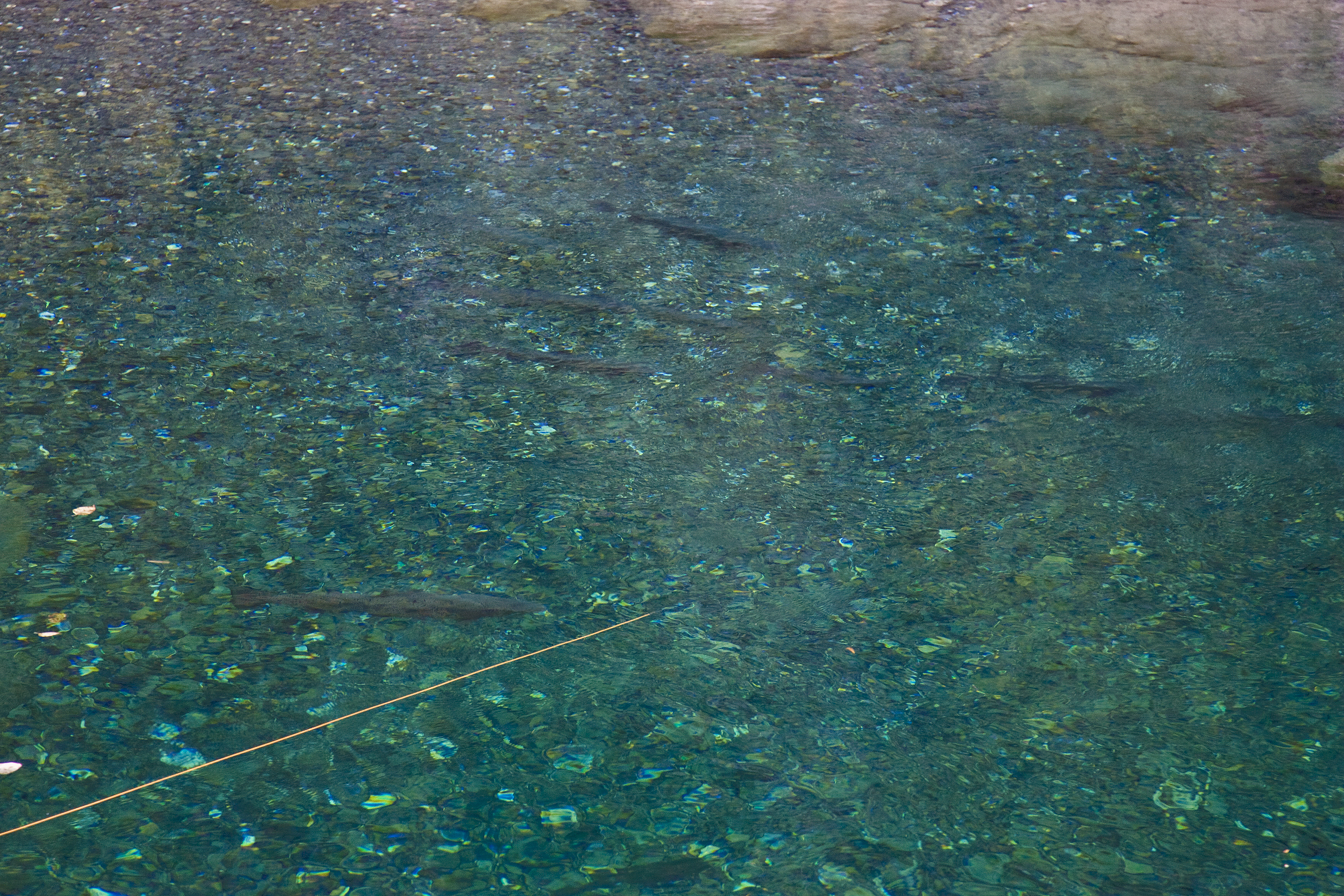
A lot of my own fishing back home is based around walking, scrambling and clambering over rocks, reefs, beaches and gullies on the hunt for a species we call the bass, but to clarify I could call it the European sea bass. I love fishing for them in this way because it’s a physical kind of fishing that tends to leave me physically exhausted at the end of the day.
I worked out pretty quickly our last day fishing the Gaspe this was going to be one of those experiences you want to savour and store. We were led across to the shallowest bank and then for about the next hour or so we literally speed-marched, or clambered, down the river and into the wilds of this quiet corner of the world. We had heard so much about the drop-dead stunning west coast of Canada, but I still feel like a bit of an idiot for knowing squat about the east coast before this trip.
This part of Gaspe could not be more different from the outrageous majesty of say BC, though in a unique way, it’s another awesome part of the world. I can’t help but love how on one coastline of this vast country you have these Atlantic salmon, but cross to the west coast and you have the whole array of Pacific salmon and an entirely different food chain—and steelhead.
I am getting used to seeing the salmon stacked up in clear pools, but how these fish seem to literally hang there, in mid-air because of the outrageous water clarity, is still a marvel to me. I surmise that the fish can see us pretty easily if we are not very careful and deliberate—which, to be honest, is not that easy for me, especially when I am in the midst of trying to nail certain photos.
Sometimes memories are of the one that got away, and not the one spectacularly hooked, played, held and perhaps released? This particular salmon was not even one that I was fishing for, but as clearly as I could see the salmon in the pool I can visualize what happened. When I am home again I delight in closing my eyes, calling up this memory, and replaying it time and time again.
Draper and I are at the head of the pool on top of a big rock, making sure not to break the horizon. Pete is down from us and slowly moving in to fish to a school of perhaps twenty or so salmon lying nose into the gentle flow as they do. It’s intoxicating to watch an angler start to cover fish that you can see so clearly and you catch yourself almost going through the movements yourself even though you are not fishing at the moment. (Draper still thinks I am barking mad I am sure.)
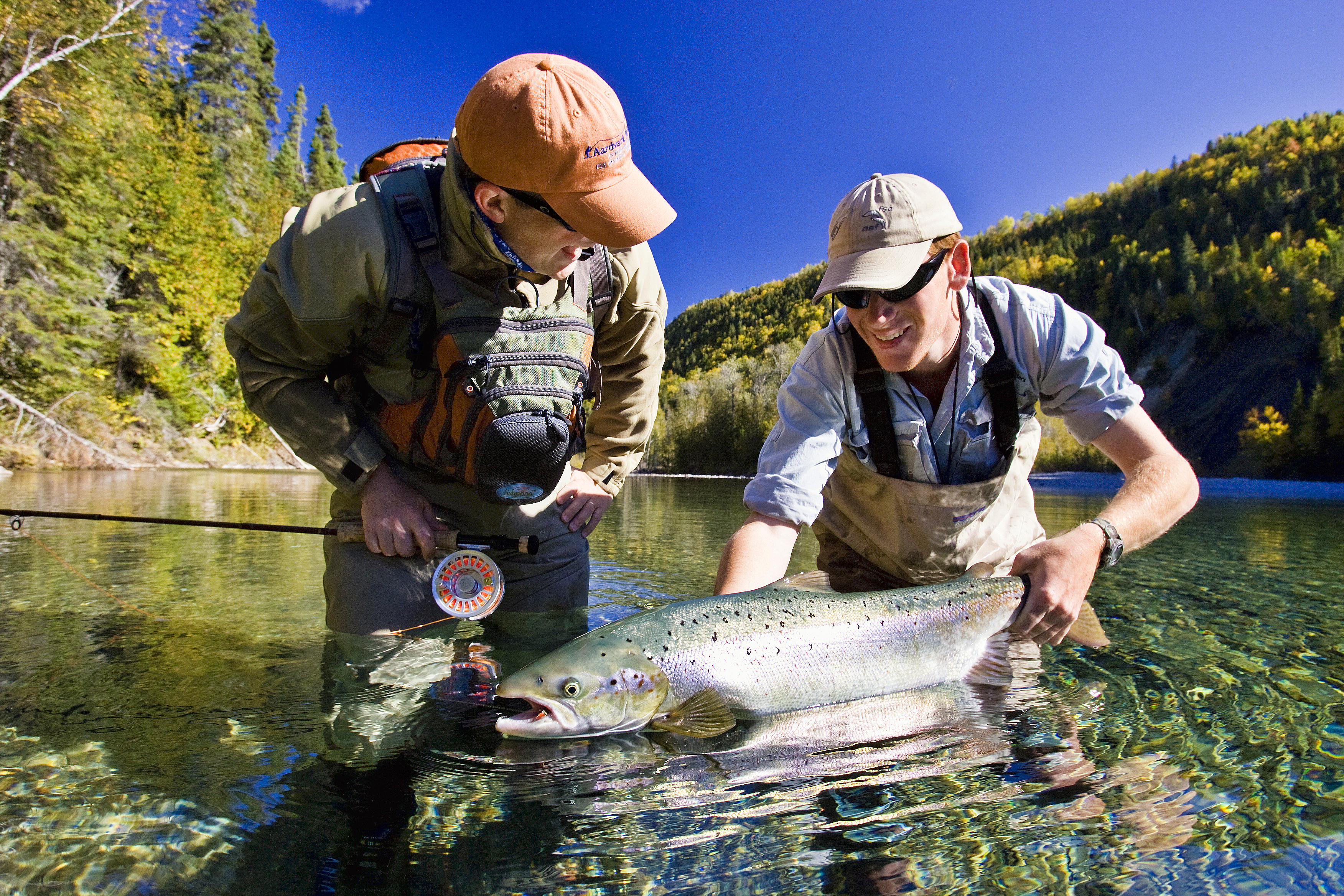
A week or so of this fine fishing and I am getting to grips with how a salmon might signify interest in a fly with perhaps the subtlest of movements that you could imagine. The biggest salmon in the pool suddenly does just that and it is all I can do not fall off the rock. OK, so the fish’s interest may be no more than a kind of shiver as the fly floats past, but that’s quite something in itself.
Draper instructs Pete to change flies to a little Dotty Orange. This next cast there is not a jot of movement from any of the fish. Or at least there isn’t until the fly has nearly covered the whole school and then out of nowhere that big fish literally charges Pete’s fly down and inhales it. Every single thing about the next second or so is ingrained in my head. Neither our guide, nor I can help it. In unison we shout, “Strike,” but Pete is resolutely immobile, his fly rod not sweeping back into a glorious curve. What the hell happened?
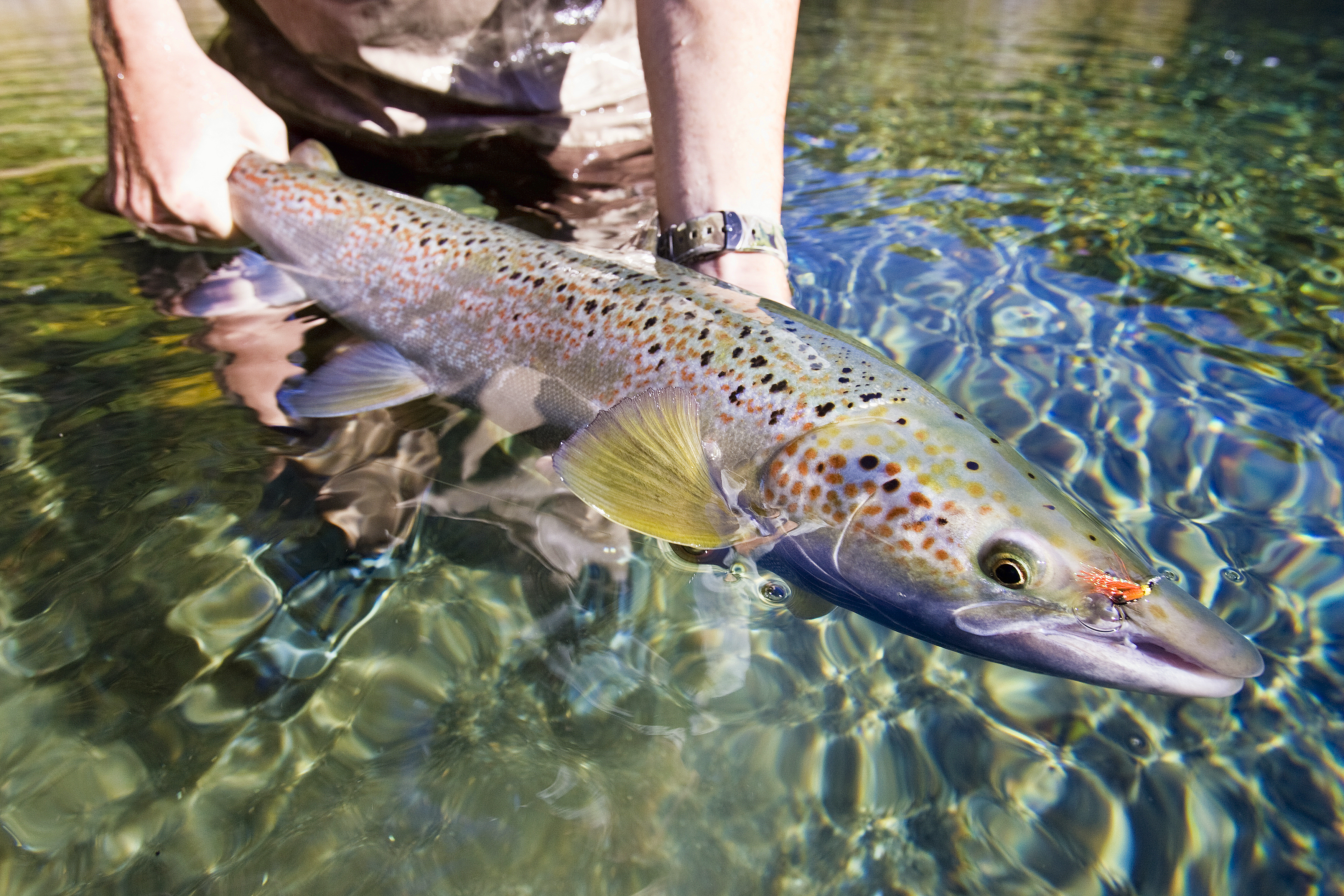
We can come to only one conclusion, though I did entertain the thought that perhaps Pete was, for a few seconds, fishing like an idiot. (Sorry about that, Pete.) That big fish without a doubt took the little fly, but Pete felt nothing. We had the angle from on high to see the whole thing unfold, but even as Pete saw the salmon coming at his fly, he just never felt anywhere close to being able to strike at anything. We had to conclude that this 30lb plus Atlantic salmon had a big kype, and that although it did in essence take the fly, the gap between the upper and lower jaw was such that the fly passed straight through, without the angler registering a single thing.
You can imagine, I am sure, how many different scenarios played through my head as we made our hurried way back to the truck, the cold fall evening chasing at our tails. Around the table that night that salmon grew to around the 40lb mark in no time at all. It’s that kind of place.
« Previous Post



Leave a Comment
No Responses to “Salmon on the Gaspe”